So you want to know how to write a suspense novel. I could tease you with this, play out the line, dangle the carrot tantalizingly in front of you. But I won’t.
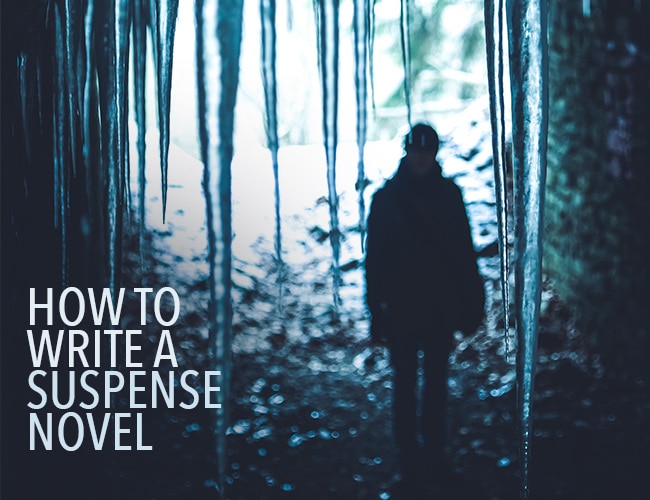
I’ll just tell you outright that suspense is my baby, my favorite of all the genres. If you’ve ever experienced those delicious moments as a reader, when your heart is slamming around in your chest, your palms are sweaty, and you can’t turn the pages fast enough, you’ll know what I mean by suspense.
Or will you?
As writers, we face a lot of confusion over terminology, so I’d like to lay the groundwork for this article by making some distinctions to ensure we’re speaking the same language.
Want to learn how to write a book from start to finish? Check out How to Write a Book: The Complete Guide.
Suspense Is Elemental
As an element of fiction writing, suspense is king. It crosses over into any and every genre, and is an integral part of pulling a reader into the story. It’s an amazing and powerful component of good storytelling, and I’ll cover it in more detail in another article. For now, suffice it to say that you create suspense, whatever type of book you’re writing, with these three steps:
- Give the reader something to worry about
- Remind the reader periodically as the story unfolds, deepening the worry
- Reward all that worrying with a spectacular payoff
Suspense as Genre
What I’ll address in this article is something quite different — how to write a suspense novel as a genre-based work, with reader expectations that must be met in order to provide a quality reading experience. While the mystery, suspense, and thriller genres all share certain characteristics, to my mind, they are three different animals. Let me explain.
Suspense is about danger, or the threat of danger.
The threat can be clear and present, or a low-level hum, but it must persist throughout the story.
Suspense vs. Mystery
Suspense differs from mystery in its focus. In a mystery, the focus is on the crime, which usually happens early in the book, and centers around the hero's pursuit of the villain.
In a suspense, that focus is flipped. The villain is in pursuit of the hero, who must figure out who wants them out of the way, determine why, and find a means of stopping it.
In a mystery, the protagonist often strives to get into a puzzle. In a suspense, she strives to get out. In a mystery, something has happened. In a suspense, something is about to happen. There is a delicious anticipation as the reader tries to discover what and why.
Suspense vs. Thriller
A suspense story differs from a thriller in terms of pacing and scope. Thrillers, by nature, are almost relentlessly fast-paced, with little letup from the tension, whereas suspense novels can proceed at just about any pace.
One of the most remarkable suspense books ever written is Daphne DuMaurier’s Rebecca. Fraught with suspense and an underlying sense of peril, it nevertheless moves at a leisurely pace through the dark halls of Manderley.
The threat that drives a thriller is usually on a large scale, involving the fate of the world as we know it. Or at least the fate of a small village. A suspense novel, on the other hand, can endanger just one individual — the hero. It may encompass more than that, but usually won’t approach the scale of a thriller. It is more intimate.
In thrillers, the hero often knows who the villain is, and the focus is on stopping him in his evil tracks. In a suspense, the hero must discover who’s driving the danger train, and what she ever did to deserve its dogged pursuit.
5 Key Factors in How to Write a Suspense Novel
Ready to write your suspense novel? Here are five things you'll need:
1. Moody atmosphere
Suspense stories have a distinctive ambience, with a dark, moody tone. They’re often set in a brooding environment with a gothic sort of sensibility — remote, macabre, or mysterious.
Even if your story has a different type of setting, you must strike a note of underlying tension, right up front. Don’t make the mistake of opening the story with action or dialogue. Suspense readers want to be steeped in the atmosphere and become acquainted with the hero before you let fly with the plot points.
2. A likeable character
You must create an empathetic character your reader will care about and want to spend time with. Since you’ll be dangling your hero over a danger pit throughout the book, you must have a character who can sustain your reader’s interest and compassion. No wimps, and no whiners.
This doesn’t mean your character needs to be of a superhero caliber. On the contrary, your character should be ordinary and relatable, but willing to step it up and do extraordinary things in order to save themselves and any others involved.
3. Varied pacing
You should have a good grasp on pacing, knowing when to ratchet up the tension and when to give readers a break. It’s like putting your readers on a roller coaster — you need to use the brakes at times, and a slow uphill crawl at other times to increase tension and build anticipation.
Of course, feel free to include dizzying gut-wrenching twists and moments of glorious downhill glide, so your readers can feel the wind in their faces and their hearts in their throats.
4. High stakes
While the scope of a suspense novel doesn’t rival that of a thriller, the measure of risk to the individuals involved should be life or death, or something approximating that. In other words, set the stakes high.
And make it clear to the reader what those stakes are. Remember, you’ve got to give your readers something to worry about, and they can’t agonize over something they’re not aware of.
A peculiarity of suspense, in contrast to mystery, is that often the reader knows almost everything, and certainly more than the protagonist. With a skillful disclosure of information to your reader, you align them on your side so that they have a fair idea of the pitfalls that await. That way, they can sweat over it and scream out to the protagonist, “No, don’t open that door!” or “No, don’t trust that guy!”
5. Masterful cliffhangers
As a writer, you have to keep the reader solidly grounded in your character’s point of view. You are putting your hero in peril, and your reader has to feel threatened. They’re riding along with your character, sharing the danger.
But life is full of distractions. If you resolve the danger at the end of the chapter, they’ll heave a sigh of relief and put the book down long enough for real life to claim them.
You need to master the art of the cliffhanger, so that your reader will sail right past the end of one chapter and into the next without hesitation. Give them a compelling reason, and they’ll do it, flipping through pages in a kind of hypnotic state, at one with the story. Reader and writer share a true connection when that happens. It’s story nirvana.
Read. Enjoy. Then, Study.
There’s no magic wand for acquiring these skills, but there’s something almost as good and just as much fun. The best way I can suggest for you to learn and internalize the skills you need to write a suspense novel, is to read a lot of suspense novels.
If you haven’t read Rebecca, start there. It’s a superb classic example.
You have to be willing to invest time in learning. Read first for sheer enjoyment, and allow yourself to be captured by the story.
If, when you’re finished, you had the kind of experience you want to give your readers, go back and read it again, paying special attention to the book’s opening paragraphs and the ends and beginnings of chapters to see how the writer handled those challenging areas.
Make note of instances where the writer gave you something to worry about. And instances where they reminded you about it. And instances where they paid if off. Jot down anything that catches your attention as to technique during the second reading.
Remember, try to ignore such things the first time around. Like watching a magic trick, you’ll miss the point if you spend all your time searching for how it’s done. Just enjoy it. Later you can go all analytical.
There's Lots to Love
Mary Higgins Clark has long been the reigning queen of modern suspense fiction. Try out her books, then take a look at Joy Fielding, Thomas Perry, Jeffery Deaver, and Gillian Flynn, keeping in mind that not all their books fall into this category.
A few good novels I’ve read recently that might fit the bill are Ruth Ware’s The Woman In Cabin 10 and In A Dark, Dark Wood. Also, Stillhouse Lake, by Rachel Caine.
Check the bestseller lists. There are lots of great suspense writers on the scene today. If you want to learn how to write a suspense novel, studying the masters is the best way to find out.
How about you? Can you think of a book that fits these characteristics? Tell us about it in the comments section.
PRACTICE
Let’s say you’re going to write a suspense novel. How would you open it?
Remember to infuse the opening with atmosphere, drenching the setting with a moody tone and establishing a likeable character up front, before any action takes place. Use sensory and specific details, and make certain you are filtering them through your character’s viewpoint and opinion. Don’t forget to include an element of danger.
Take fifteen minutes to write the beginning of a suspense novel. Have fun! When you are finished, post your practice in the comments section. And if you post, please leave feedback for your fellow writers.
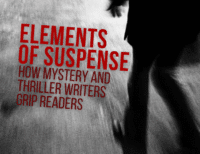
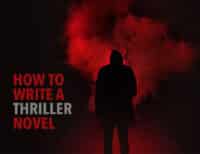
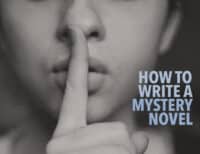
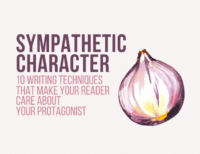



I’ve written several suspense novels, but reminders are always helpful. We’re all beginners when we start a new novel. Thank you.
You are most welcome, Joan. I wish you all the best in your writing, and have fun!